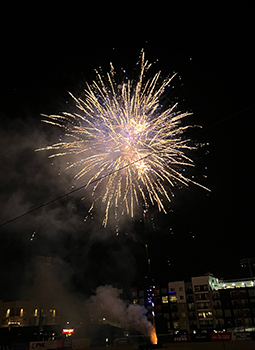 It’s that time of year when we’re reminded o be grateful for all the gifts we’ve been given. It seems to me a great idea to stop and take time to bring to mind all the good things we have. But I prefer to try to practice gratitude year-round.
It’s that time of year when we’re reminded o be grateful for all the gifts we’ve been given. It seems to me a great idea to stop and take time to bring to mind all the good things we have. But I prefer to try to practice gratitude year-round.
I approach it not as an emotion, but as an exercise. It’s something I do rather than something I feel. At least once a day I remind myself of the many good things I have. When I get down or am tempted to feel sorry for myself, I make it a point to bring to mind the positives in my life.
It isn’t always easy. My life isn’t all bunny rabbits and roses. I’ve had plenty of disappointments, personal and professional. I’m an author, writing fiction, which all but guarantees that there will be plenty of soul-crushing events. Rejections, bad reviews, publisher issues, poor sales—if you’re a writer trying to get published or stay published, you’ll have plenty of experience with these. However many stories you’ve had accepted, awards you’ve won, glowing reviews you’ve garnered, there will likely be more of the bad things. You can’t afford to dwell on them.
Among the many things I’ve been blessed with personally are a wonderful husband and a great family. Not that it’s always been smooth sailing. There’ve been crises, arguments, times when money was desperately short, some ugly health issues. I’ve had periods of depression and felt helpless at times. But my children have bloomed into wonderful people and they’ve provided many grandchildren that I adore.
I have a warm house, plenty of food on the table, transportation plus the freedom to go wherever I want, and decent health (despite some ups and downs, including Long Covid). Those are a lot more than many people in the world have. Compared to many I live like a queen.
And while I may not have any kind of bestseller status, I have had a number of books and stories published. I’ve won awards and been a finalist for quite a few more. I’ve had decent reviews on most of my books.
Wait… One of my books (Falling for the Deputy) actually was an Amazon bestseller in an obscure category for a couple of days while the book was on sale. Good enough. I’m grateful for it.

 At the end of November, I’ll have stories published in two different anthologies and those two stories are about as different as they could possibly be.
At the end of November, I’ll have stories published in two different anthologies and those two stories are about as different as they could possibly be. In these days, it’s not a good career move to write whatever your muse suggests (unless it keeps suggesting the same thing over and over). Consistency is the key to building readership, experts in publishing tell us. Give readers what they expect from you, based on stories they’ve read before. Not the same exact thing, but stories in the same genre, with similar themes and characters.
In these days, it’s not a good career move to write whatever your muse suggests (unless it keeps suggesting the same thing over and over). Consistency is the key to building readership, experts in publishing tell us. Give readers what they expect from you, based on stories they’ve read before. Not the same exact thing, but stories in the same genre, with similar themes and characters. All of the seasons have their good points—even winter, though admittedly it’s my least favorite. Of them all, Fall has my heart. In North Carolina, spring is great but lasts about three weeks before diving into summer. Summer heat and humidity wear out their welcome long before the season moves on.
All of the seasons have their good points—even winter, though admittedly it’s my least favorite. Of them all, Fall has my heart. In North Carolina, spring is great but lasts about three weeks before diving into summer. Summer heat and humidity wear out their welcome long before the season moves on.

















